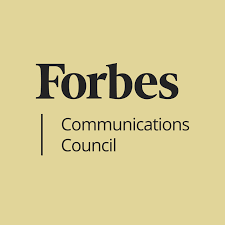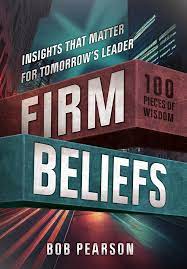 Our brains are built to seek predictability. We like getting into a groove.
Our brains are built to seek predictability. We like getting into a groove.
So, when something like generative AI hits our shores, it feels like a tsunami has arrived and we were just fine, thank you, with 3–5-foot waves.
My view is we don’t need to make it so complicated. All we need to do is break down how innovation normally occurs and why we have a role in how our world is shaped.
The World Intellectual Property Association is a good place to start.
They define an inventor as someone who identifies an unmet need or a problem and then figures out the solution. That’s it.
Funny how nothing in that statement says that you have to know how to code or have deep knowledge of AI or live in Palo Alto. Huh.
Let’s take a minute and think of today’s world of AI news in a different manner.
One of the most important devices to navigate where we are heading in life is the compass, which reacts to magnetic fields and tells us where we are going.
Generative AI is symbolic of a magnetic field. It is pushing us almost like a magnetic force to change how we think about tomorrow. It is unrelenting and we should expect it to stay this way.
You can’t stop a magnetic force. You can harness it, however, and become the arrow.
The great majority of us, the non-technologists, have the opportunity to partner with software programmers and point in the right direction to disrupt a market or solve a new problem.
We decide what problems we want to solve, whether it is building a new healthcare application to serve the needs of families battling a rare disease or a new way to pull data to create a corporate language model that tracks the reputation of our firm. Or just a better way to build a parking lot.
The non-technologists know what is needed in the world, since we work directly with customers and employees worldwide every day.
We must trust our instincts and join AI creators to imagine a better solution.
Sounds simple, so why doesn’t it happen regularly?
It starts with how we make innovation more complex than it really is in practice.
The concept of innovation is pretty simple.
It occurs when we think of something that is not available today. We may iterate on a past solution to improve it. We may mash up two products to create a new and better one. We may obsess over a customer pain point until we figure out the problem.
Our solutions will, unfortunately, just sit there and age until they are irrelevant, unless we can find partners who can make them come to life.
Software and data science fulfill this role as our future partner.
This is step one. Find people who are creating the magnetic force, and you serve as the arrow to build your own compass pointed towards a problem that will improve something in our world.
Step two relates to the noise inside our head.
Most of us love the status quo and change makes us uneasy. We don’t like disruption, even if we know the result may be an improvement. We’re thinking “can’t you just keep doing what we did last year?”
We are fearful of big bosses learning that we failed at a project. It is a fear that stops us well before we contemplate how we would structure a new idea. Easier to not try.
We are not as confident as we should be in our own abilities to innovate, and we tell ourselves that our ideas are probably not that great. That’s our inside voice.
Here is reality.
During a career of being willing to try new models anytime anywhere, I have learned quite the opposite is true.
Some of the best partnerships occur between idea people and technologists who can push each other intellectually to create a new solution. Neither of us usually have “the answer”, but, together, it is like chocolate and peanut butter.
Every pilot is a learning that help us iterate to the right place or realize we won’t get there in the near term. Not everything works, but every result offers insights.
Leaders of companies have more respect than you realize for those who disrupt the status quo. Your peers may not, since they are often the antibodies to change, but the boss does. They are always thinking of how to gain an edge in the market. Stay strong.
The epiphany is to realize that it’s ok if you don’t code or know exactly how to use every new AI app.
You are excellent at identifying unmet needs and establishing what the problem is to solve.
You are capable of finding a partner who can make this idea come to life.
In fact, as the non-technologist, you are the compass for the AI creator who needs your partnership to build a solution that will matter to the market. No inventors want to raise money, build a cool slide deck, and then fail. We all want to succeed.
Partner and skip a generation or two of learning just by mashing up your knowledge.
Remember that the other half of AI innovation is all of us who don’t live in Silicon Valley.
Let’s build the solutions we need, together.
